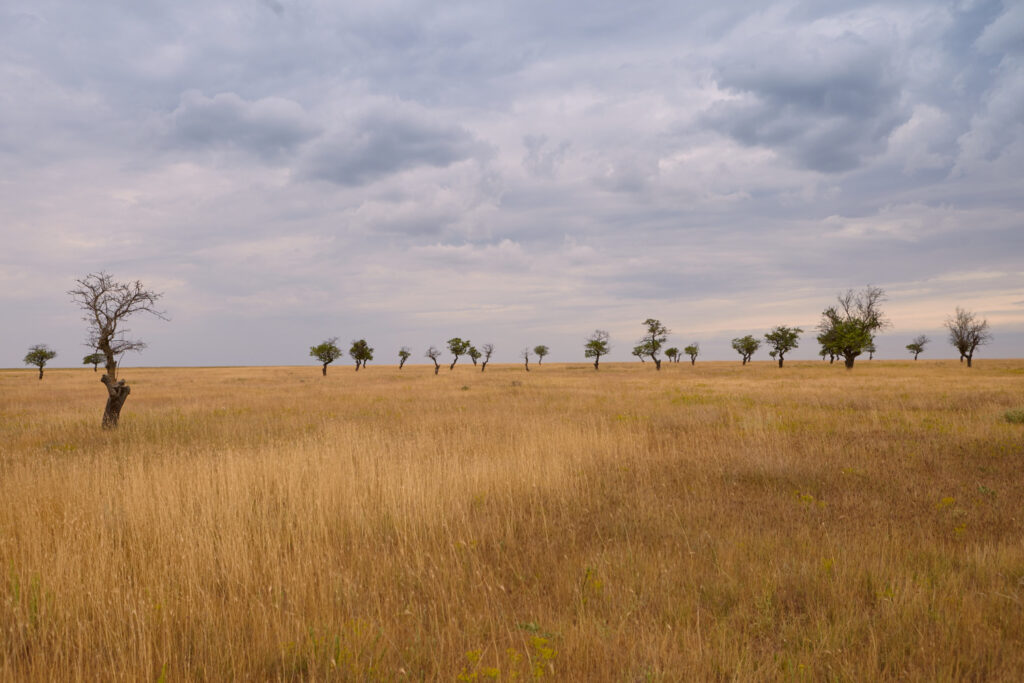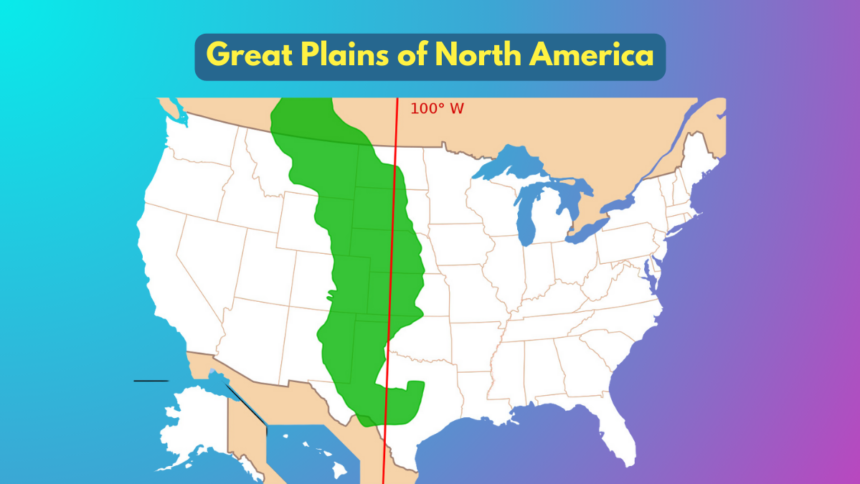Introduction
The Great Plains, often called “The Plains,” is a vast expanse in North America. It is situated east of the Rocky Mountains, which is covered in Prairie, steppe, and grassland. It is the western side of the “Interior plains,” which also consists of the mixed grass prairie and the tallgrass prairie, just among the “Great Lakes” and “Appalachian Plateau” along with the “Taiga Plains” and “Boreal plains” in “Northern Canada.” The Great Plains of North America is situated in the “Central United States” and “Western Canada.”
Importance of the Great Plains of North America
Historical importance:
The Great Plains were hardly inhabited before 1600. Spanish colonists from Mexico started settling in on the southern plains in the 16th Century and kept domestic animals with them. The introduction of horses additionally gave rise to a growing Plains Indian Culture. In the 19th century, inhabitants from the eastern US started to displace the Indians, the next one being dismissed to slight farming. European refugees also played a crucial role in settling the plains.
Ecological Importance:
The ecology of the Great Plains is very big and hugely payable to their prominent structure. Dissimilarity in downpour, promotion, and scope creates many inhabitants incorporating short grass, mixed grass, tall grass prairies, and riparian ecosystems—the Great Plains, from Mexico in the south through the Middle US to Middle Canada. Also, many subdivisions stay within the area. The area houses many animals: American bison, pronghorn, mule, white-tailored deer, and birds, including ducks, hawks, sparrows, and many other invertebrate kinds.
Economic Importance:
The urgency for many farms, farmsteads, and estates to manufacture feasible financial parts has led to a massive relocation from remote areas. This withdrawal has been depressing for the farmers and entrepreneurs who stayed and created a daunting existence for churches, schools, and remote marketing places. The smaller number of inhabitants has focussed services in some selected places where it was needed to overcome long journeys in attending schools and churches for commerce and recreation. To meet these daunting tasks, a few farmers have shifted and started living and coming and going from their land to their workplace, an improvement of a centuries-old pattern.

Geographical Features of the Great Plains of North America
Terrain:
The Great Plains is a vast upland of arid steppe. Their height at the bottom of the Rockies in the US is in the middle of 5000 and 6000 feet (1500 and 1800 meters) above sea level; this declines to 1500 feet at their eastern boundary. The elevation of the Canadian part is at the bottom and quite close to the Arctic Ocean; the exterior is only slightly above the zero-level solution. In the US, the great plains are emptied by the Missouri River and its tributaries (the Yellowstone, Plate, and Kansas) and the Red, Rio Grande, and Arkansas rivers, which go along the eastwards from the Rockies in huge, sheer, and superficial valleys.
Climate:
The Great Plains has a continental climate; this includes frigid winters and cozy summers with very little rain and dampness, too much air current, and sudden swaps in weather conditions. The vast source of humidity is the “Gulf of Mexico,” and the quantity falls off to the north and west. The southern plains have 15 to 25 inches of downpour yearly; the northern plains are 12 to 15 inches; the eastern verge in Montana is lower than 15 inches. More downpours appear in summer than in winter, other than in the northwestern part of the great plains. The southern area of the Canadian Great Plains gets 10 to 20 inches and has a growing season of 70 to 110 days.
Vegetation:
Grasses, tallgrass, and medium grass prairie in the east and shortgrass and scutch grass steppes in the west influence natural greenery in the Great Plains. These grasslands consist of Forbes and bigger plants, such as yucca and the prickly pear cactus, in insignificant places, along with shrubs and some saplings, such as mesquite and sagebrush. Many genuine areas are covered with grass.” gallery forests, also known as the “Riparian forests, can be seen along the rivers, including rivers and some complex xerophytic trees, for instance, box elder and cottonwood.
Rivers:
Large Prairie River Ecosystem types are found throughout the Great Plains region of North America within the Missouri River drainage, along with the renowned rivers, such as the Niobrara and the Palette, the Kansas River(KS), Belle Fourche, and the James Rivers (ND and SD). The Montana Glaciated Plains and the Marias River are highlighted below the Fresno and Tiber Dams.
Wildlife and Ecology:
Bison:
A well-known symbol of the American West, the Plains Bison, also sometimes referred to as buffalo, is one of the two subspecies of the American Bison, along with the other one, the wood bison. These large animals are also roaming around North America in nomadic herds. By the early 1800s, bison were removed from the west of the Rocky Mountains and east of the Mississippi River. There are 20,500 plain bison in conservation gatherings and an extra 420000 in commercial herds. The bison are not intimidated by extinction; the species even face other provocations.
Wildlife Diversity:
The more excellent plains are home to various animals, including Bison, black-footed ferrets, pronghorn, greater sage grouse, Mountain plover, etc.
Conservation Efforts:
The Great Plains Foundation takes a comprehensive outlook on conservation and all of the projects, whether it’s wildlife, landscape, or community, searching to put back for restoring and safeguarding the places for the wilds. The successive approaches are taken for keeping and taking care of the ecosystems:
- Conservation Efforts: safeguarding the upcoming creations of wild rhinos. The Great Plains Foundation’s rhino activities target the security of wild rhinos in Africa, accompanied by local, domestic, and global sections and battle against wildlife offenses.
- Project Ranger: Project Ranger started initially with an extremity in retaliation to the Covid-19 pandemic. In 2020, as travel and exploration were stopped, national parks, safeguarded places, and cottages were kept vacant. Their motto was “Stop a Poacher. Sponsor a Ranger. Save a Species”
- Sapi Restoration: The main target of the Sapi Restoration Initiative is to replace this used-up scenery with a combination of focused security, proper conservation ideas, and conservation exploration.
- Big Cats Initiative: Great Plains Founders Dereck and Beverly Joubert, the discoverers of National Geographic, created the “National Geographic Big Cats Initiative (BCI)”. After almost a decade, BCI has founded more than 150 projects located in 28 countries.
Economic Importance:
Agriculture:
The great plains have always remained the best and most favorable place for cultivating wheat, cotton, corn (maize), sorghum, hay, and raising cattle and sheep. In addition, the place has become a proper place for cattle feedlots, where range-fed cattle are pressed for the market on range-grown corn.
Energy resources:
Most of the power resources of fossils (coal, gas, and natural gas), bio-fuels (ethanol), and wind are focused on the grassland ecology of the Great Plains. As the power stipulation increases, ascending compulsion will be located on North American Grasslands. Energy production can also influence the finances and the well-being of the local inhabitants. Constant investigation of the power-making influences and reduction steps is required to create the best handling practices for the grasslands’ wellbeing while giving the necessary power to the United States.
Tourism:
Tourism in the northern plains of America is a blend of its natural scenic view and rich heritage. The 33 sq km is 7 kilometers from La Fortuna and has been active since July 29, 1968. It is often seen as one of the main tourist attractions of the place, and it can be seen not only during the day but also during the night. In addition to that, there are a lot of secured spots, lakes, rivers, active volcanoes, waterfalls, and becoming an adventure spot. Some tourist businesses in many groups that have made provisions for the tasks related to experiences on “canopy tours” include La Fortuna, La Virgen, and Puerto Viejo de Sarapiqui.
Conclusion:
The great plains of North America are considered not only a home for endangered animals but also a place of tourism. Just in between the normal inhabitants taking care of the northern plains through agriculture, there are also places of energy reserves, from weather variation to diverse wildlife.
Stretching across vast grasslands, this region is decorated by rolling prairies, rugged scenery, and an open sky connected with the ones who call it home. Reverting to the inheritance of the Great Plains, it is realized that not only is there jaw-dropping beauty, but also, it is affection for human history. In addition to that, the Great Plains has faced many issues, from environmental challenges to socio-economic troubles. Thus, it is an idol of the dead and the buried and a ray of light for the future.





